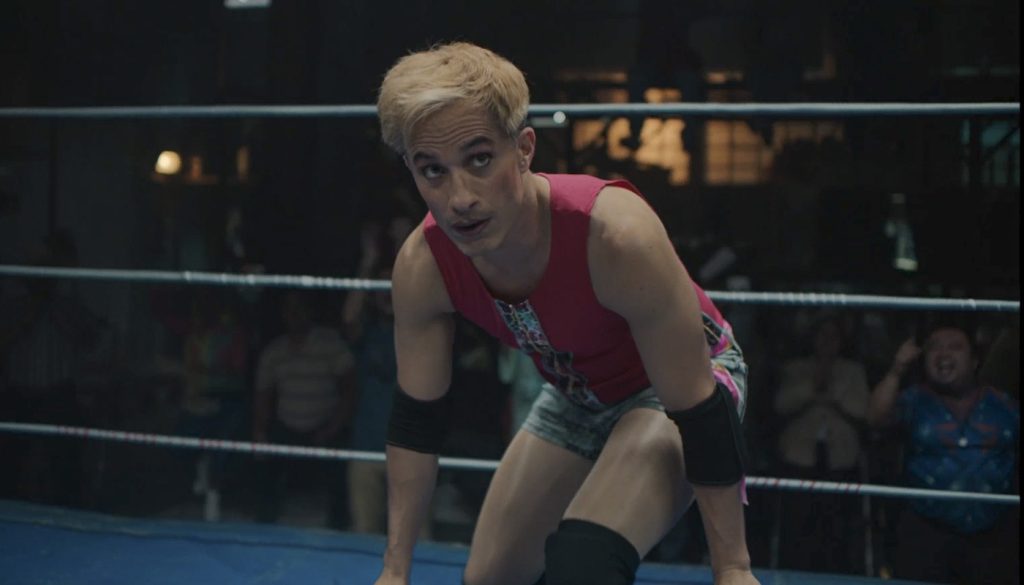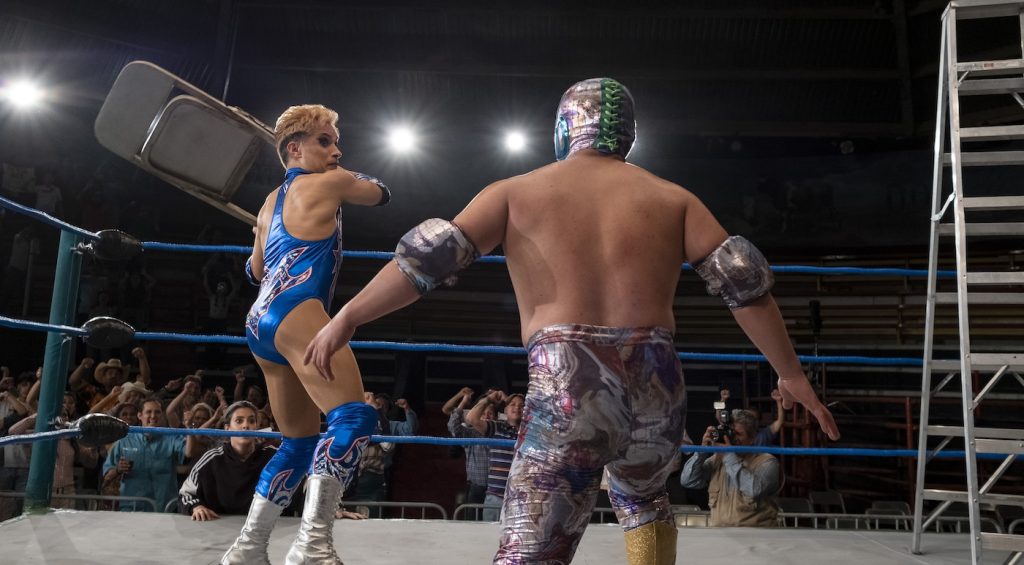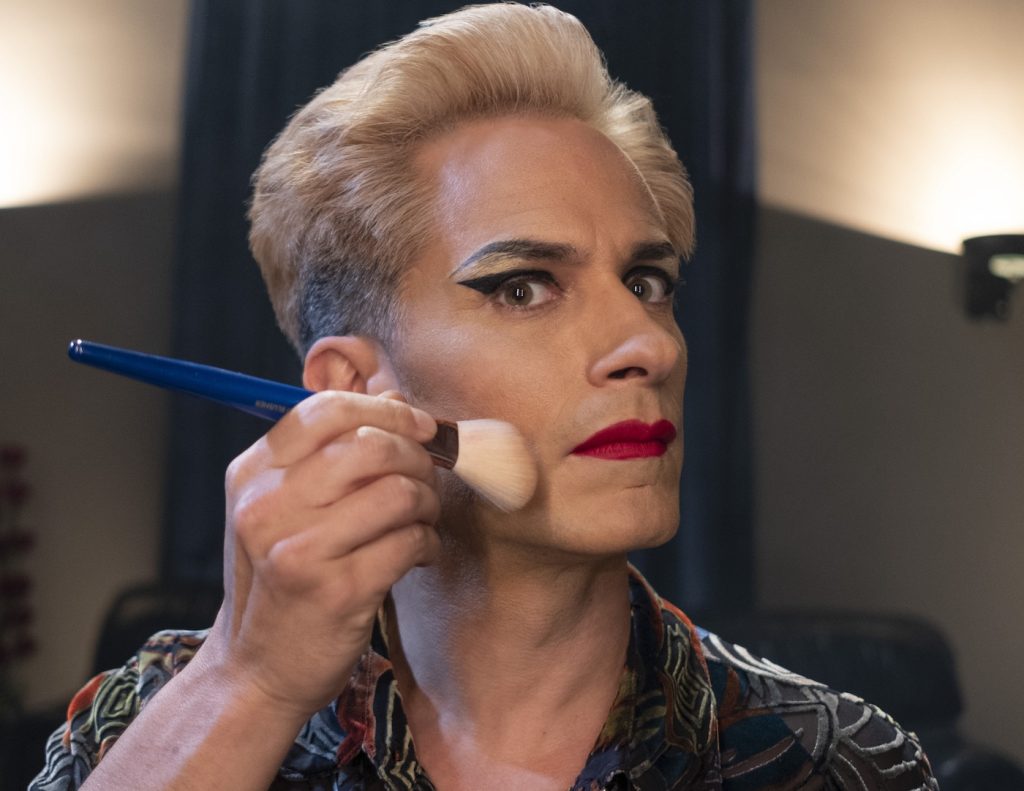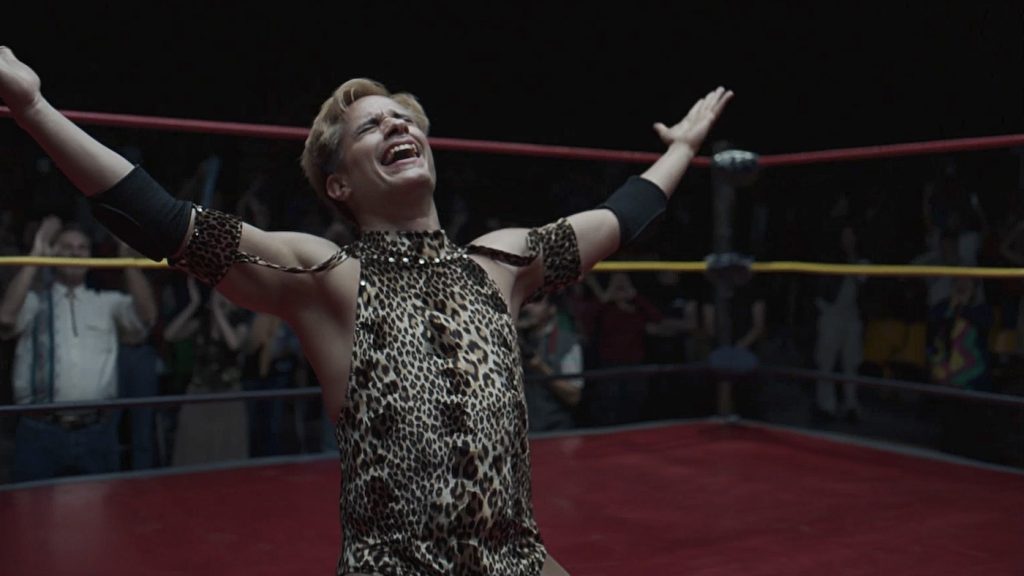Gael García Bernal on His Showstopping Performance in “Cassandro”
Gael García Bernal has played a political revolutionary, an eccentric symphony conductor, an animated trickster, and a victim of a beach that makes you age years in hours, but he’s never made as much noise in one film as he does in Cassandro, where Bernal had to rile up crowds of thousands as the eponymous lucha libre star. Cassandro, a Texas native known outside the ring as Saúl Armendáriz, became an unlikely wrestling champion in Mexico by flaunting his flamboyance. As his success in the movie grows, so does the braggadocio that Bernal exhibits.
Bernal, who has carved out a reputation as one of his generation’s finest actors, tends to take on less showy roles. His work in films like Y Tu Mamá También, Babel, No, and Old can be intense, but most of Bernal’s performances don’t require the same over-the-top razzmatazz. Maybe that explains why the Oscars continually overlook his globetrotting work.
As awards season unfolds, Cassandro is making a bid for recognition. It has another heavy hitter in director Roger Ross Williams, who previously profiled Armendáriz for The New Yorker Presents and has also directed The Super Models and Life, Animated. The Amazon movie was released during the Screen Actors Guild strike, so Bernal can finally promote his transformative performance.
Roger Ross Williams has said he didn’t want you to spend a ton of time with Saúl before production began. Is that what you would have chosen too?
The nature of this was a free interpretation of the life of Cassandro. You have to amalgamate certain elements and bring in different things that are not really part of the life story of the real Saúl. Saúl came up with the character of Cassandro, so we had to come up with our own Cassandro as well. If I needed to talk to Saúl about what he did, most of the information was out there. He had done documentaries. The other thing is that, unfortunately, before starting to shoot, he had a health situation that took him out for a little while. I talked to him, and then we saw each other on the last days of shooting. That was really beautiful.

In the time you did spend with him, or in any of the research that you did, was there something you picked up from him that helped you understand what it feels like to be in the ring, receiving the energy of the room and having to feed it back to the crowd?
That detail, in a way, is something that you can experience only by doing it. The wrestling training helped a lot. It was six months of physical conditioning and then two months of wrestling training before starting to shoot. That was incredible because it’s such a difficult sport that also includes the performative aspect. You have to give a good show, no? But one of the many things I learned through Cassandro is that you start from the surface, and then you start to understand a little bit more about the character. You start to walk like the character, start to internalize the character, and start to put the costume and the makeup together. There is also something very interesting that I want to be very faithful to, which is the life of the border culture. On the Mexican border, there is that duality that resembles what happens as a wrestler. You cross a line to become someone else, and that someone else is more of who you want to be. The border culture is incredible because they’re born with a situation that is horrendous on a sociological level. They’re born with a stupid wall right in front of them. They have to overcome it to live there and not acknowledge this human division. The community is so strong there. They’re vanguards in the sense of where humans are at right now.
During those wrestling sequences, were you performing for a full arena? I can’t imagine drumming up that energy in an empty room.
The problem is that it’s very difficult to fill in a full room. The last wrestling match was shot at a stadium that seats 70,000 people. We had like 2,000 people, which is quite a lot, but in that place it feels like there’s no one. But they participated, and it was fantastic. Most of them grew up with lucha libre, and they knew what to do.

Was there a specific moment when you connected to the character after first seeing yourself in one of the wrestling outfits and the full makeup?
I worked with María Estela Fernández, who’s a fantastic costume designer that I’ve worked with for many, many years, and Itzel Pena, who is an incredible makeup artist. We’re a film family. One year before starting to shoot, we started to try out stuff. It was a little-by-little process, but it was better to start with the complete extreme and tone it down. We also had to play with the practicalities. I cannot wrestle with heavy eyelashes or a wig. It was impossible, so it had to be my hair. Once you put elements together, something incredible happens. Also, the accent and the pluma — the feather. In queer Spanish slang, it’s like, “Let’s train the feather” or “Let’s get the feather.”

Over the years, your interest in making Hollywood movies seems to have waxed and waned. What do you make of the offers you’re getting at this point in your career?
It’s an interesting time, no? When I started to work, Mexican cinema was at its lowest point. There were only six films done that year when I made Amores Perros. And 50 years before, there were like 200 films made each year. Little by little, it started to get back. Among the many opportunities that allowed me, the most important one was that I’m able to play in Spanish and to perform with bigger dimensions and more complexity. English-speaking studio movies were an option as a nice alternative, but I also worked in Spain, Argentina, Brazil, Chile, Peru, France, and Italy. After COVID, the film experience has changed. Who knows where this will lead for me or for anyone.
Your breakthrough involved a handful of cool, edgy movies that people really responded to: Amores Perros, Y Tu Mamá También, The Motorcycle Diaries, and Bad Education. When you’ve done all those movies in relatively quick succession, is it hard to settle for things that don’t reach the same highs?
It’s very difficult to replicate that experience, but I had that feeling on No with Pablo Larraín, which was the first time we worked together. It brought me back to that joy. Before, I used to love it, but I was very innocent. This time, there was no innocence. It was a pure, mature joy. That gave me a little bit of inner energy. I don’t know how many dog years a good film gives you. There are great films I’ve done that haven’t had the success or attention they deserve, and on the other hand, I’ve done some other films that haven’t been transcendental in terms of me being part of them. My experience is always different from the outcome. It’s hard for me to look at it from the outside.
Have you enjoyed the bigger phenomenons, like performing a Coco song at the Oscars or making something as meme-friendly as Old?
When something comes out, you end up belonging to that film rather than the film belonging to you. I don’t control it anymore, but it’s fantastic. I love how diverse everything can be, like doing Werewolf by Night. The Marvel experience was great because it was touching on an angle and a world that I have never tapped into, this fantasy-horror kind of thing. I had a lot of fun doing it, but at the same time, the complete opposite would be me participating in a small film or directing a film in Mexico. I love being able to experience that range.
Which directors are still on your wish list?
I would love to work again and again and again with Pablo Larraín. We’ve done three films together now, and it’s such a joy to work with him. I would love to work again with Alfonso Cuarón, who’s like my brother and maybe the most talented filmmaker around. I’m still tapping into a curiosity I’ve always had, which is that sometimes, the further away the film can take me, the better. There is this wonderful director named Stephan Komandarev. He’s from Bulgaria, and he’s got a great film called Blaga’s Lessons that I recommend. It’s really, really amazing. I don’t even know him, but working with him would be fantastic.
For more on Amazon Prime Video, check out these stories:
“Saltburn” Cinematographer Linus Sandgren on Creating a Fluid Painting for Emerald Fennell
New “Taylor Swift: The Eras Tour” Extended Version Trailer Arrives Ahead of Streaming Debut
Amazon’s “Spider-Man Noir” Series Taps “The Punisher” Showrunner Steve Lightfoot
Featured image: Gael García Bernal in Cassandro. Photo: Courtesy of Prime Video © AMAZON CONTENT SERVICES LLC




